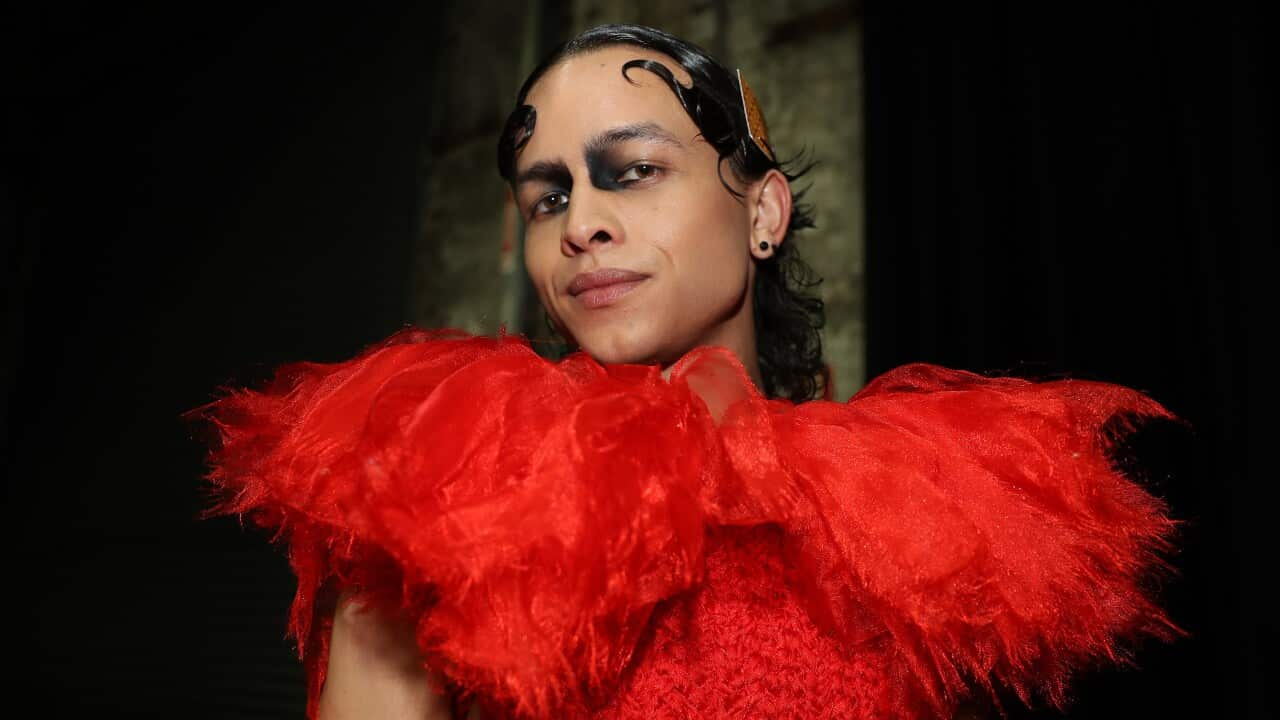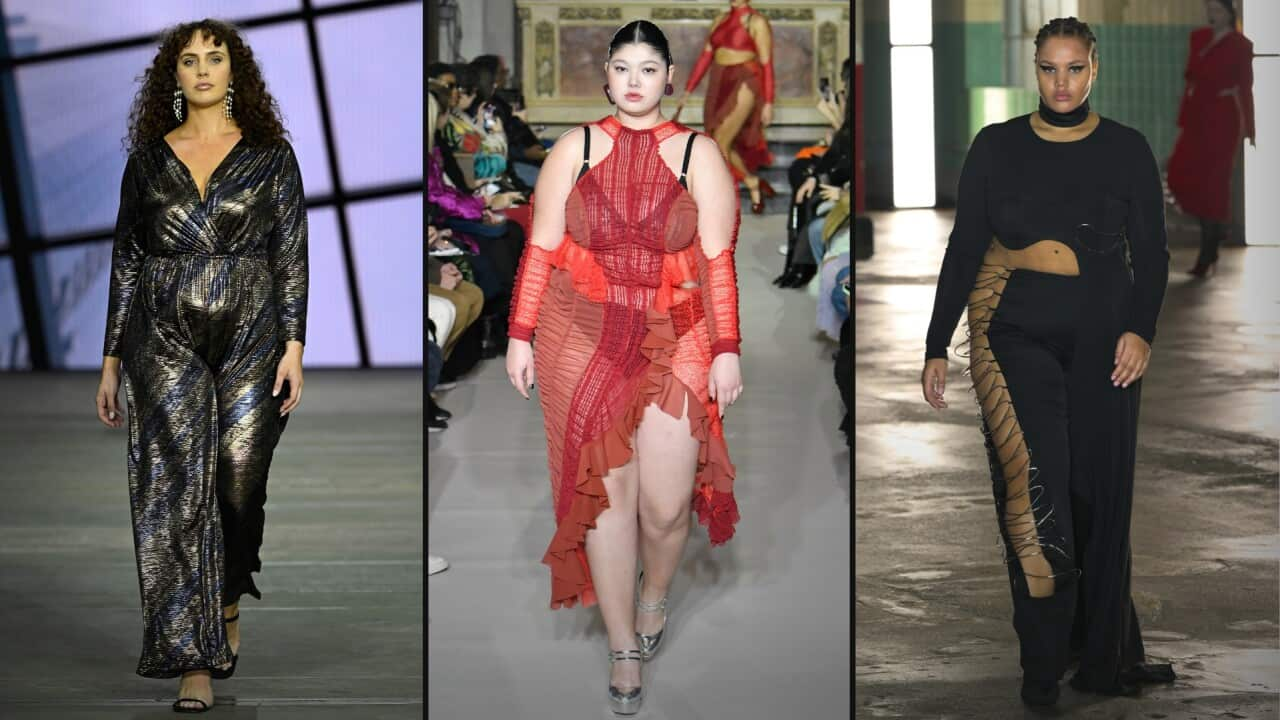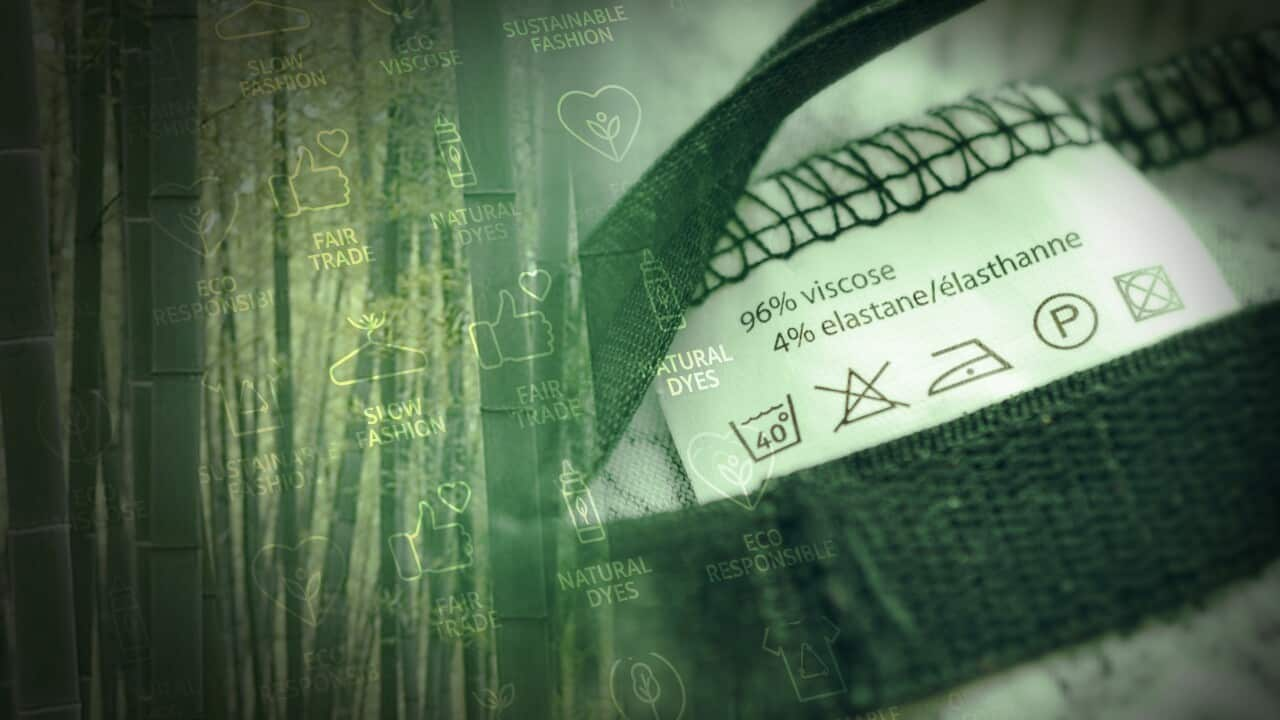A celebration of self-expression, diversity and inclusion, Erik Yvon's designs transcend gender.
"We want to make clothes for every body ... so it's really inclusive," the Melbourne-based fashion designer told SBS News.
"Whenever I'm creating a design, line or cut, it has to flatter every single shape."

Erik Yvon is a Melbourne-based fashion designer. Source: SBS News / Jennifer Scherer
"I wanted to create something that represented my community, that everyone felt comfortable with, and for them to have something that they would wear and feel happy in," he said.
"I just want to have space for everyone and showcase how beautiful we all are."
Gender fluidity and body diversity are woven into the very fabric of Nathaniel Youkhana's label.
"You can experiment with more, it's fun, it's playful," the Sydney-based designer told SBS News after Youkhana made its Australian Fashion Week runway debut.
"People just tend to enjoy having their own sense of style without having somebody tell them what to wear."

Nathaniel Youkhana is a Sydney-based fashion designer. Source: Supplied / Nathan Angelis
Australian Fashion Council chief executive Leila Naja Hibri says is a "no-brainer" for the industry.
"At some point we dissected male and female fashion, and I don't understand why," she said.
"Fashion is about expressing yourself, whatever your sexuality, whatever your gender.
"I also really believe that for fashion to move towards a more socially and environmentally-viable future, brands should just be brands; they're not a female brand or a male brand or a binary brand, they are just brands."
According to the latest by Afterpay in conjunction with the Australian Retail Association, one in seven people are more likely to buy from a brand that offers gender-fluid products.
But more than a quarter of shoppers also believe Australian brands don't offer enough in the way of gender-neutral options.
In Maori model Manahou Mackay's eyes, all clothes are gender-neutral.
"Fashion has always been a place that celebrates the things that make us unique and different, and is kind of a catalyst space for quite profound societal change," Manahou said.
"Just because something's shaped in a specific way, doesn't mean it's reserved for one kind of human being.
"I feel like it's more on the consumer just to have the courage to not look at clothing in a gendered way."
Wakka Wakka model Kai Clancy says while the Australian fashion industry is getting better at showcasing a diverse range of gender identities and expressions, improvements were still needed.
"There's a lot of transgender female bodies walking this week, a lot of non-binary people walking this week, but I'm the first transgender man to walk, and we're still waiting for more recognition," he said.
"There's still a long way to go for your more mainstream brands, but your more couture, the designers that make their clothes on shore here, they're the ones that really care about making clothes that fit everyone."

Kai Clancy walked in Erik Yvon's Australian Fashion Week Show this year. Source: Getty / Marley Morgan
"I think it's really important that you don't make assumptions about their needs, and obviously don't make assumptions about their gender or their pronouns, so engage respectfully but also involve people in decision making," she said.
"If you do want to, as a creative, look at this space of gender fluidity, and you're not of the trans and gender diverse community, that would mean talking to trans and gender diverse people about what this means to them, and getting their input into the creative process itself."












